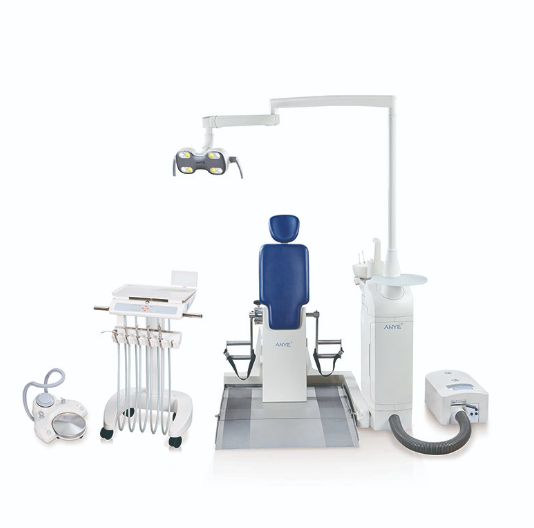What are the Importance of Dental Chair Foot Control
In the realm of dental practices, precision, comfort, and efficiency are paramount for both practitioners and patients.
Among the numerous advancements in dental technology, the integration of foot control mechanisms within dental chairs stands as a testament to innovation and enhanced workflow.
The utilization of foot controls in dental chairs has revolutionized the way dental procedures are carried out, offering a multitude of advantages that significantly benefit both dentists and their patients. In this post, the author would illustrate the importance of dental chair foot control.
Among the numerous advancements in dental technology, the integration of foot control mechanisms within dental chairs stands as a testament to innovation and enhanced workflow.
The utilization of foot controls in dental chairs has revolutionized the way dental procedures are carried out, offering a multitude of advantages that significantly benefit both dentists and their patients. In this post, the author would illustrate the importance of dental chair foot control.
Seamless Workflow and Enhanced Ergonomics
One of the primary advantages of dental chair foot control lies in its ability to streamline workflow.
By integrating foot-operated controls for chair positioning, water and air flow, and other essential functionalities, dentists can conveniently adjust settings without interrupting the procedure. This seamless control not only saves time but also enhances overall workflow efficiency.
Moreover, foot controls contribute significantly to improved ergonomics in the dental office. Dentistry demands meticulous precision and prolonged periods of sitting in specific postures.
Foot control mechanisms allow dentists to maintain better posture by reducing repetitive hand movements, minimizing strain, and preventing musculoskeletal issues commonly associated with prolonged static positions.
By integrating foot-operated controls for chair positioning, water and air flow, and other essential functionalities, dentists can conveniently adjust settings without interrupting the procedure. This seamless control not only saves time but also enhances overall workflow efficiency.
Moreover, foot controls contribute significantly to improved ergonomics in the dental office. Dentistry demands meticulous precision and prolonged periods of sitting in specific postures.
Foot control mechanisms allow dentists to maintain better posture by reducing repetitive hand movements, minimizing strain, and preventing musculoskeletal issues commonly associated with prolonged static positions.
Uninterrupted Focus and Enhanced Patient Comfort
The implementation of foot-operated controls enables dentists to maintain uninterrupted focus during procedures. With hands-free operation of essential chair functions, dentists can concentrate entirely on the patient and the task at hand. This undivided attention leads to better treatment outcomes, increased accuracy, and reduced procedural errors.
Additionally, patient comfort is significantly enhanced through the use of foot controls. The ability to make adjustments to the chair position or control water and air flow without having to disrupt the procedure to reach for manual controls ensures a smoother and more comfortable experience for patients. This not only improves the overall patient experience but also fosters a sense of trust and confidence in the dental practice.
Additionally, patient comfort is significantly enhanced through the use of foot controls. The ability to make adjustments to the chair position or control water and air flow without having to disrupt the procedure to reach for manual controls ensures a smoother and more comfortable experience for patients. This not only improves the overall patient experience but also fosters a sense of trust and confidence in the dental practice.
Hygiene and Infection Control
Another crucial advantage of foot-operated controls in dental chairs is the improvement in hygiene and infection control. By reducing the necessity for hand contact with manual controls, the risk of cross-contamination is significantly minimized. This feature becomes particularly crucial in maintaining a sterile environment, mitigating the potential transmission of infections between patients.
Versatility and Customization
Modern dental chair foot control systems offer a high degree of versatility and customization. Dentists can personalize the settings and configurations of the foot controls to suit their specific preferences and the requirements of different procedures. This adaptability contributes to a more personalized and efficient dental practice, catering to the unique needs of each dentist and patient.
Conclusion
Finally, the integration of foot-operated controls in dental chairs has revolutionized the dental practice landscape. From enhancing workflow efficiency and ergonomics to promoting patient comfort and ensuring infection control, the advantages are multifaceted.
As technology continues to evolve, these advancements play a pivotal role in redefining the standards of dental care, ultimately benefiting both dental practitioners and their patients in myriad ways.
As technology continues to evolve, these advancements play a pivotal role in redefining the standards of dental care, ultimately benefiting both dental practitioners and their patients in myriad ways.



Leave a comment